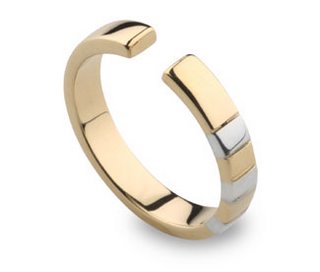U Star Novels
Like so many great business ideas Katie Olver’s eureka moment came to her out of a desire to buy something that didn’t exist. She was on the look-out for a personalised novel as a present for a friend, but the only ones she could find were for children.
After doing some research, she discovered that while personalised books for adults existed in the US, nobody had thought to bring the idea across the pond.
With a little persuasion, she convinced her partner of seven years, Jon Reader, to help her turn the idea into a business, and got to work on setting up U Star Novels, a series of personalised romance novels where the reader is the protagonist.
In October the first U Star book went on sale, selling 100 copies in its first week.
Olver says U Star is expecting to recover its £15,000 start-up costs by Christmas, a mere two months after launching. Next year’s turnover is expected to be somewhere in the region of £80,000, based on an estimated sale of 3,000 books, 75% of which Olver says will probably be sold around Valentine’s day.
Olver’s idea is simple. A choice of romance novels, all set abroad. The customer enters his or her details into an online form, and the personalised details are added to a pre-written novel of their choice, which is then sent to the printer.
Olver says the only major costs in getting the business up and running went on commissioning the writers of the novels, and getting the website set up.
However, the creation of the website ended up costing far more than just a design fee. “We initially wanted to launch on Valentine’s Day 2006, but we hired some designers that didn’t get the job done on time, and in the end did such a bad job we had to take them to court.”
However, the pair sought legal help and were advised that because they were a start-up company, it would be difficult to prove their forecasted sales if they wanted to claim compensation. Olver and Reader eventually settled out of court, recovering some of their legal costs.
Getting the company recognised through winning awards was a big part of U Star’s marketing strategy, according to Olver. The company also targeted the women’s monthlies and national papers, as well as approaching gift websites so it could sell the books through them as well as its own site.
At present, U Star consists only of Olver and Reader. The outsourcing of the printing and website up-keep means U Star can tick along without other staff, although Olver says they are considering hiring someone to look after admin next year.
Although Olver admits it can be quite stressful running a business with a romantic partner, she says there is no-one else that would give her as much support and confidence.
U Star is the pair’s second joint business venture. The couple ran a PR firm called Momentous for four and a half years before entering the world of books. As with U Star, Reader took care of the financial side of the company while Olver used her PR background to attract clients such as Samsung.
Olver says some of that experience has helped with setting up U Star. Writing press releases and manipulating the media came naturally to her, but she admits neither her or Reader had any real publishing knowledge when they started U Star.
Nevertheless the pair are clearly unfazed by the prospect of trying their hand at new projects. Not content with Momentous and U Star, the couple are already coming up with ideas for other business ventures. It seems as though Olver and Reader have caught the entrepreneurial bug, and there is no cure in sight.
The Book of Myself: A Do-It-Yourself Autobiography in 201 Questions







